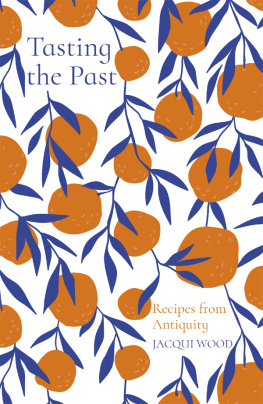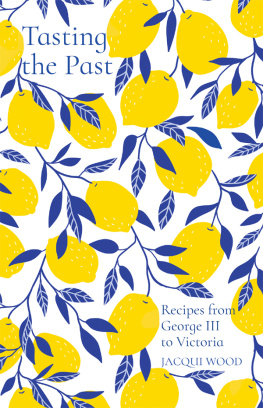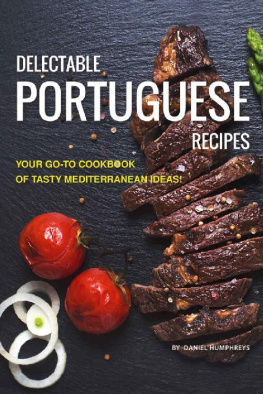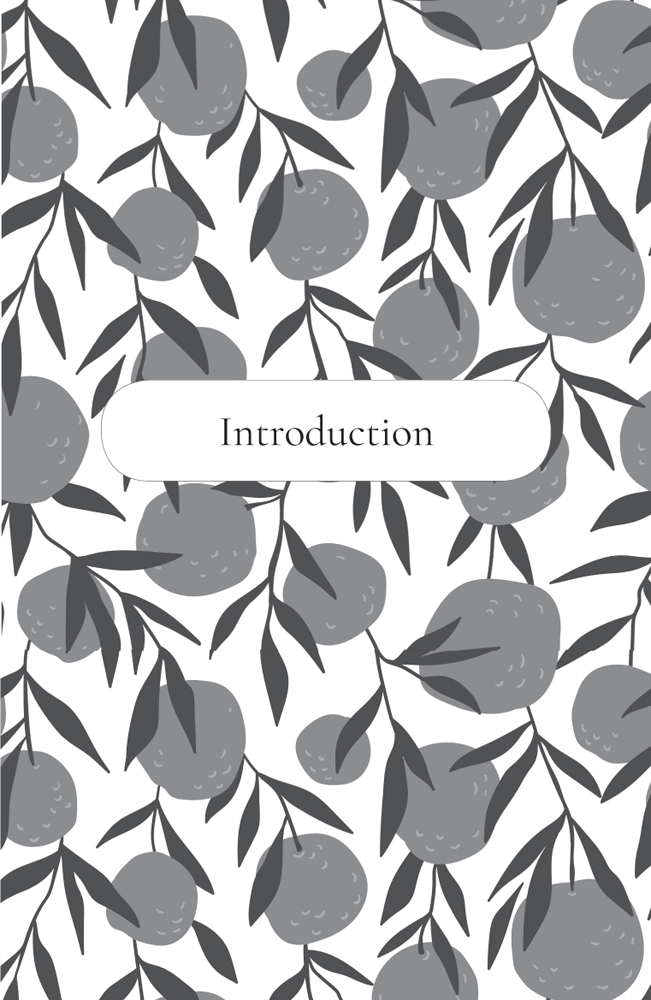Contents
Guide
Tasting the Past
Tasting the Past
Recipes from Antiquity
JACQUI WOOD

Cover Illustrations: Utro_na_more/iStockphoto
First published 2009, as part of Tasting the Past: Recipes from the Stone Age to the Present, and 2001, as part of Prehistoric Cooking
This edition published 2020
The History Press
97 St Georges Place, Cheltenham,
Gloucestershire, GL50 3QB
www.thehistorypress.co.uk
Jacqui Wood, 2001, 2009, 2020
The right of Jacqui Wood to be identified as the Author of this work has been asserted in accordance with the Copyright, Designs and Patents Act 1988.
All rights reserved. No part of this book may be reprinted or reproduced or utilised in any form or by any electronic, mechanical or other means, now known or hereafter invented, including photocopying and recording, or in any information storage or retrieval system, without the permission in writing from the Publishers.
British Library Cataloguing in Publication Data.
A catalogue record for this book is available from the British Library.
ISBN 978 0 7509 9459 0
Typesetting and origination by The History Press
Printed and bound in Great Britain by TJ International Ltd.
eBook converted by Geethik Technologies

Contents
BRITISH FOOD HAS been hard to categorise in the past compared to the very distinctive cuisines of countries such as Italy, France and Germany. This is because it is an amalgamation of all of them, in the same way that the English language is a combination of five European languages: Celtic, Latin, Saxon, Viking and Norman. Our cuisine, too, is a combination of the typical foods of those that once conquered Britain over a thousand years ago.
But Britains assimilation of the foods of other cultures did not stop after the Norman Conquest. During the medieval period, the spices brought from the Crusades by the Normans were used in almost every dish by those who could afford them. When Britain itself began to have colonies, the culinary embellishments to our diet began again. During the Elizabethan period, strange produce coming from the New World was adopted with relish by our forebears.
The Civil War period introduced Puritan restrictions to our daily fare, making it against the law to eat a mince pie on Christmas Day because it was thought a decadent Papist tradition. The Georgians took on chocolate and coffee with gusto and even moulded their business transactions around the partaking of such beverages. But it was really not until the Victorian period when it was said that the sun never set on the British Empire that our diet became truly global in nature.
This book will hopefully become a manual for those readers who want to put on a themed dinner party, providing a wide selection of recipes from each period in history. I have not included those recipes that I feel you would never want to make, but instead have focused on dishes that will allow you to experience what it was really like to eat during those particular periods. No one, apart from the truly adventurous among you, is going to acquire a cows udder from the butcher and stuff it as they did in the medieval period, or stuff a fishs stomach with chopped cods liver!
Each chapter will begin with a brief introduction to the foods of the period that I found particularly fascinating during my research, and will end with the traditional festive food of the period. If you want to celebrate your Christmas in a completely different way, why not try a pagan Celtic spread or a Roman feast?
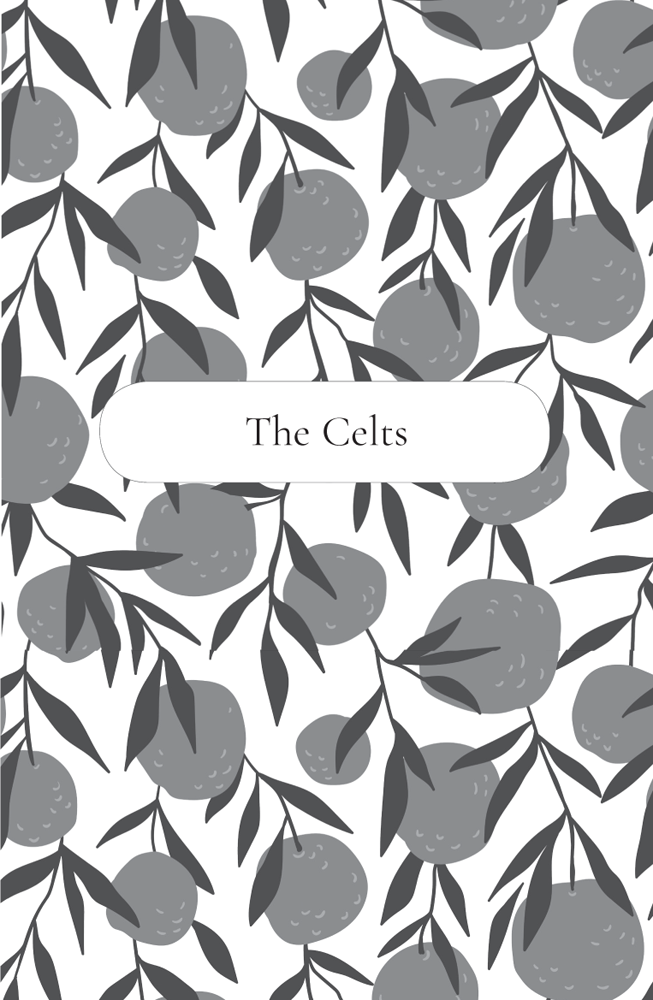
IF I HAD to sum up one item of food that really says Celtic, it would have to be bacon or ham. The first Celtic society in Europe came from the Hallstatt region of Austria, where the famous salt mines are today. These people were in fact salt miners, and when archaeologists came across their remains in the labyrinth of tunnels in the Hallstatt mountains, they were well preserved due to the salt surrounding them. The Romans even commented on the fine quality of their salt pork and salt lamb, which were sold at the time in the markets as far south as Rome. So if you want to make yourself a quick and tasty authentic Celtic breakfast, make yourself a bacon sandwich with butter on brown bread and you are eating a bit of Celtic history!
On the whole, Celtic food was simple and unadulterated, with lots of meat, fish, bread and butter and chunks of cheese. Their main vegetable crops were beans and peas, and the rest of their vegetables they still gathered from the surrounding countryside and seashore. Vegetables were primarily leaves and stems, as the root vegetables we know today only arrived in Britain at the time of the Roman Conquest.
I devised the recipes below from a variety of sources from the archaeological record. Until I wrote my book Prehistoric Cooking, no one had attempted to try and discover what recipes our prehistoric forbears might have used. There was a school of thought arguing that, unless you found the actual residue of a particular meal in a pot, then you could not say categorically that our ancestors ate it. I, however, approached the subject in a different way. If we watch a TV documentary about an Amazonian tribe, we all assume that if there were tasty plants near them in the forest they would have known about them and eaten them. So I did not see why our ancestors should have been any different. I started to look at the pollen record around prehistoric settlements and, if the plants were tasty, then I put them in my recipes. I also looked at some lesser-known cooking techniques such as clay baking and water pit cooking.
There are also some lesser-known quotes by classical historians about the Celtic diet that add to this picture. One might assume that if you are going back as far as the Celtic period, something as basic as bread might be a bit hard and chewy, but this was not the case, as a quotation from the Roman historian Pliny illustrates:
When the corn of Gaul and Spain of the kinds we have stated is steeped to make beer the foam that forms on the surface in the process is for leaven, in consequence of which those races have a lighter kind of bread than others.
He is clearly talking about yeasted bread, which we tend to think was not eaten until much later. On the whole, the Celtic diet was varied, healthy and very tasty. One year I was doing a lot of cookery demonstrations and I found it impossible to weed my vegetable patch, as the weeds that grew around my vegetables were more valuable to me for cooking than the vegetables themselves! Here is a selection of recipes for you to try.
Lamb Boiled with Green Grass
This is the way people in prehistoric times cooked their meat in water pits. They covered the joint of meat, in this case a leg of lamb, in fresh green grass and tied it with string. Then they put it into a water pit and added hot stones to simmer for an hour or two until it was cooked. The grass not only protected the meat from the ash and stone grit in the trough, but also added flavour to it. Once cooked, the meat was taken out of its grass wrapping and crisped by the fire. This can be done in a modern kitchen by wrapping a leg of lamb in green grass and boiling it in a pot on the stove. When it is cooked, take it out of the grass and crisp it in the oven. You will never taste more delicious lamb than one that is cooked in this way. The grass seems to bring out its real flavour.

